For International Dance Day, established by the International Theatre Institute in 1982, we’re spotlighting legendary ballerina and innovative choreographer, Ruth Page.
She brought world-class dance to Chicago’s stages as artistic director of the Chicago Opera Ballet, Lyric Opera Ballet, and Ravinia Festival. Page was the first American guest ballet soloist with The Metropolitan Opera and collaborated extensively with the visionary artist and landscape architect Isamu Noguchi. Her legacy continues to be celebrated in Chicago through the Ruth Page Foundation, which includes a performing arts center and dance school, the annual Ruth Page Awards for outstanding dance achievement in Chicago, and the Ruth Page Week of Dance presented by the Ravinia Festival.
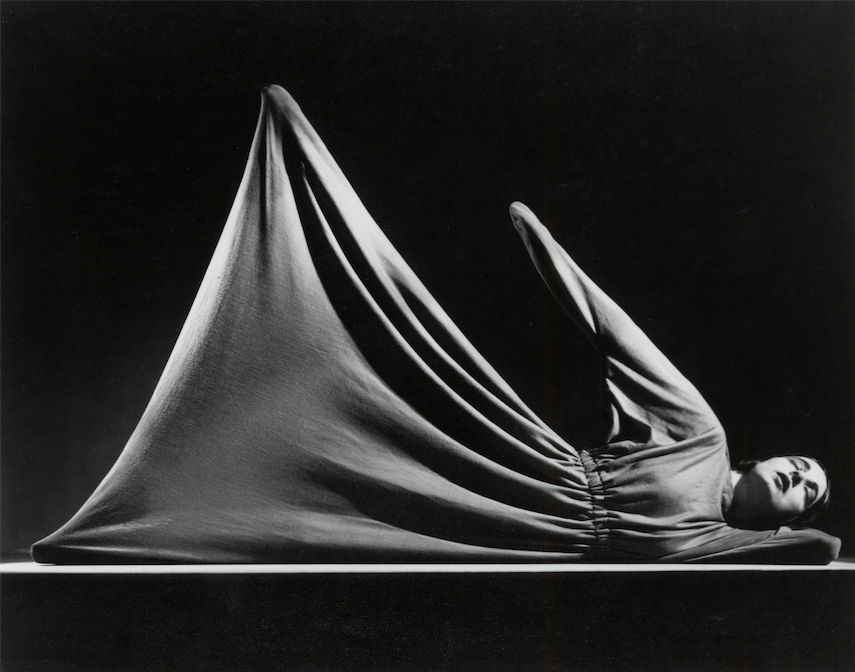
An undated photograph of Ruth Page in her costume for Expanding Universe. CHM, ICHi-031053
Off the stage, Page was known for her fashion sense, and was a favored client of Christian Dior. Peruse a collection of Dior garments below that she wore and generously donated to the Chicago History Museum’s costume collection, by far the largest donor of Dior materials. Although some of the pieces were purchased at the Dior Salon in New York, most have labels identifying them as from the House of Dior in Paris. Buying these garments would have required Page to visit the Paris salon to be measured and possibly return to the salon numerous times for fittings. Many of her pieces show signs of alterations, but a few are among the only unadulterated Dior garments in the Museum’s collection.
Christian Dior was especially fond of his very wealthy clients who could afford to be dressed from head to toe in his designs. The House of Dior offered the fashionable woman a full range of clothing and accessories—first offering Christian Dior hats, followed by shoes, gloves, jewelry, hosiery, cosmetics, and even perfume. The fashion house offered a woman every clothing need she may have for day, cocktail, and evening occasions—from underwear to outerwear. For some of his most favored clients, Christian Dior was involved with every fashion choice, offering suggestions and often making the final decision on what was best for the entire ensemble. Many famous designers followed Dior’s lead in the creation of accessory lines and licensing of their names to create the bulk of their gross annual sales.
Dior Garments Donated by Ruth Page
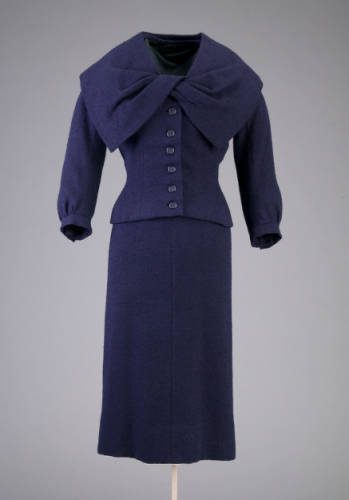
Suit of dark blue wool crepe, 1954.
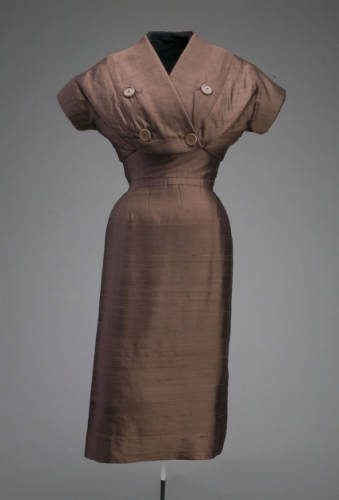
Afternoon ensemble of dark brown shantung silk, 1955.
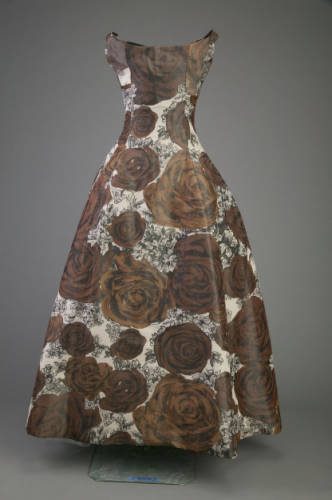
Evening dress floral-print taffeta in white, black, and light and dark brown, 1953.
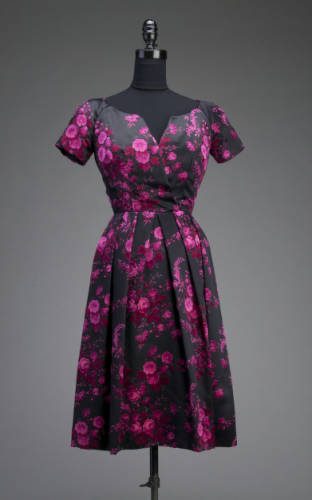
Evening gown of black and dark pink floral printed silk velour, c. 1953.
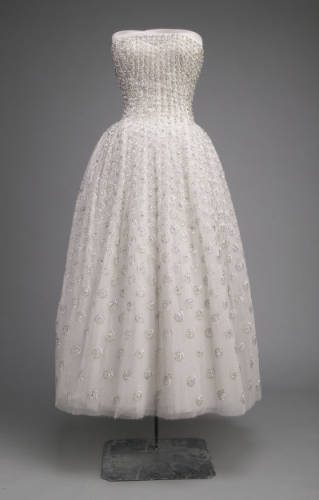
Evening dress of light pink tulle with silver-colored sequin and rhinestone trim, 1953.
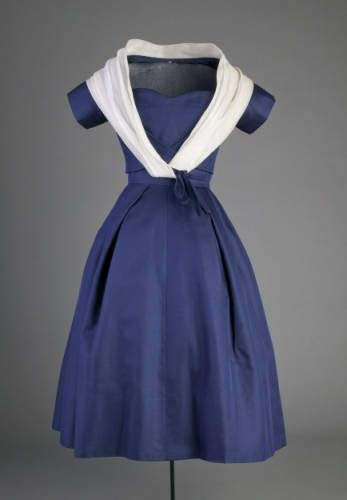
Dress of dark blue silk taffeta, 1956.
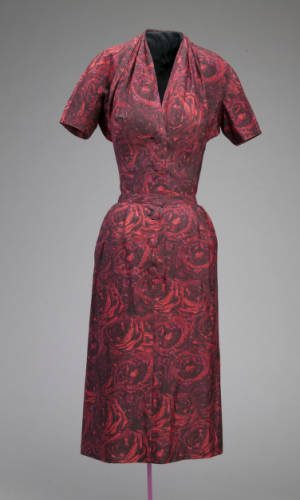
Ensemble comprising two interchangeable bodices, skirt, belt, jacket, and matching bag (not shown), c. 1954.
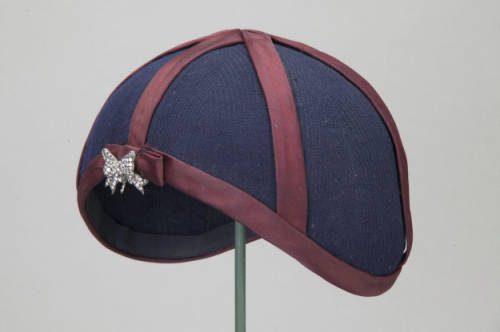
Hat of dark blue wool felt with red silk satin ribbon trim and rhinestone bow, c. 1954.
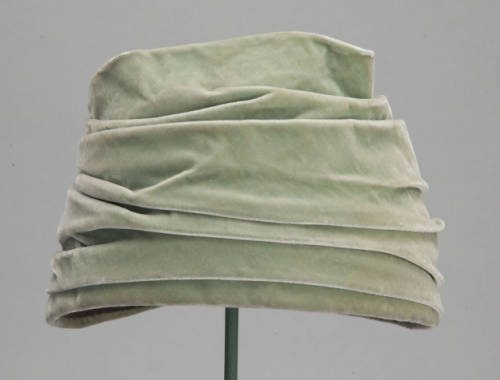
Hat, toque-style, of light green, 1950.
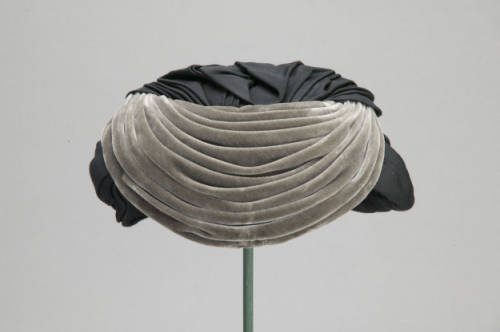
Hat of gray silk velvet and black silk taffeta, 1954.